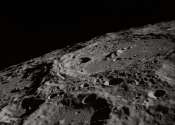What's on the far side of the Moon?
Looking up at the silvery orb of the Moon, you might recognize familiar shadows and shapes on its face from one night to the next. You see the same view of the Moon our early ancestors did as it lighted their way after sundown.









